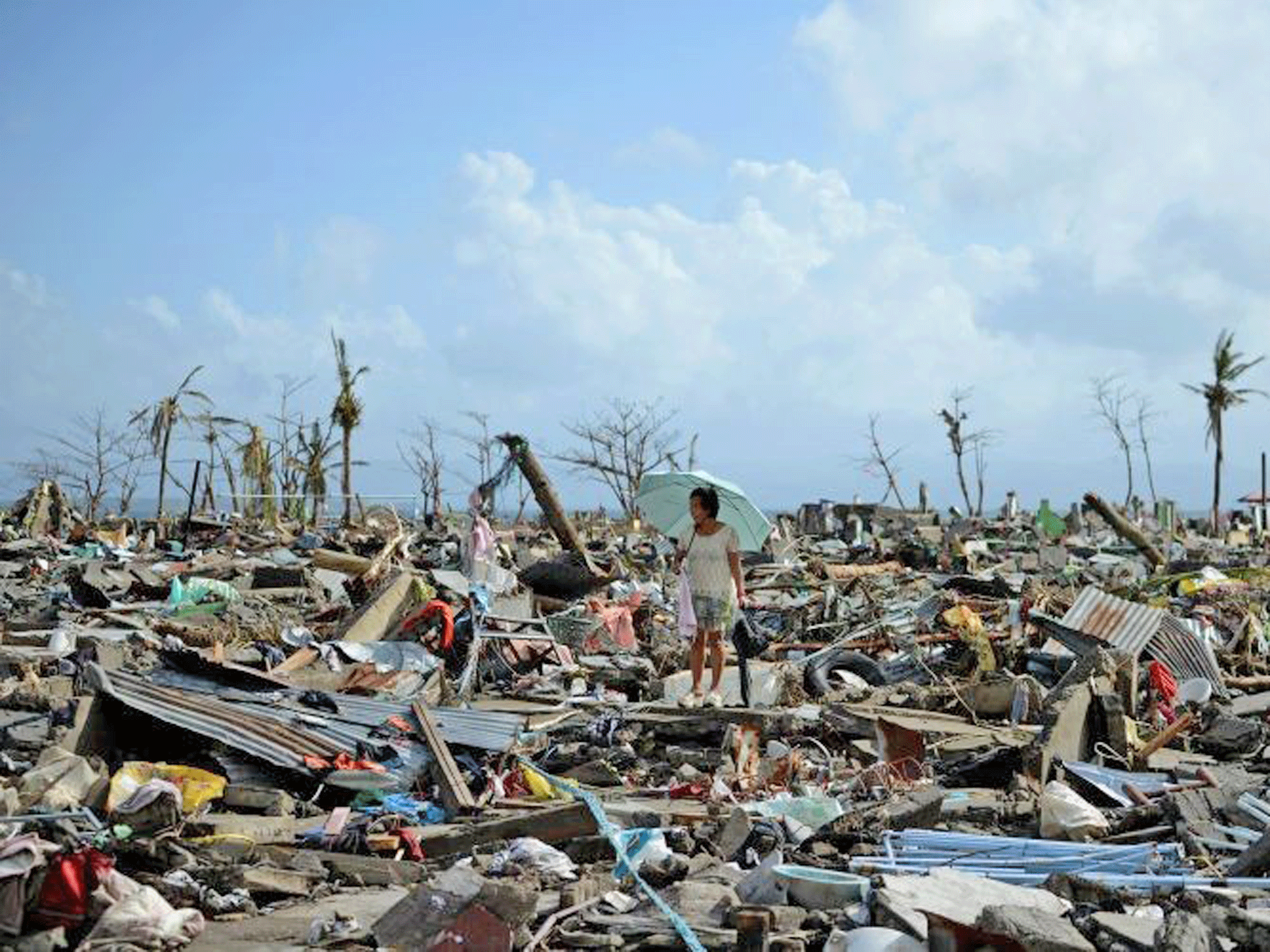Evidence for human-induced climate change grows as 2013 is revealed as the sixth-hottest on record

No single weather event can prove or disprove climate change, but in its review of 2013 the world’s leading meteorological authority suggests that many of last year’s weather extremes are likely to have been heavily influenced by rising global temperatures.
In some ways 2013 was a typical year for the global weather. Heatwaves, cold snaps, violent storms, droughts and floods all played their part in shaping 2013 – as they do every year – but there is growing evidence that human activities are making weather extremes more frequent or extreme, the World Meteorological Authority has concluded.
Some of the strongest tropical cyclones to hit land were seen in 2013, notably Typhoon Haiyan which devastated parts of the central Philippines, and Cyclone Phailin, the second strongest tropical cyclone to strike India since modern records began, resulting in the evacuation of 1.1 million people from coastal areas.
Australia and Argentina sweltered under record or near-record temperatures in the southern hemisphere, while a “blocked” jet stream in the northern hemisphere – possibly influenced by the dramatic melting of the sea ice in the Arctic – brought a bitterly cold spring to Britain and heavy rainfall and floods to central Europe.
“Many of the extreme events of 2013 were consistent with what we would expect as a result of human-induced climate change,” said Michel Jarraud the secretary-general of the WMO, a United Nations body.
“Naturally occurring phenomena such as volcanic eruptions or El Nino or La Nina events have always contributed to frame our climate, influenced temperatures or caused disasters like droughts and flood,” Dr Jarraud said.
“But many of the extreme events of 2013 were consistent with what we would expect as a result of human-induced climate change. We saw heavier precipitation, more intense heat, and more damage from storm surges and coastal flooding as a result of sea-level rise – as Typhoon Haiyan so tragically demonstrated in the Philippines,” he said.
The WMO’s annual assessment of the global weather found that 2013 was the sixth warmest year on record – tied with 2007 – and that there was no let-up in global warming. 13 of the 14 warmest years have occurred since 2000 and each of the last three decades have been warmer than the previous one, with the decade 2001-2010 being the warmest on record, the WMO said.
“There is no standstill in global warming. The warming of our oceans has accelerated, and at lower depths. More than 90 per cent of the excess energy trapped by greenhouse gases is stored in the oceans,” Dr Jarraud said.
“Levels of these greenhouse gases are at record levels, meaning that our atmosphere and oceans will continue to warm for centuries to come. The laws of physics are non-negotiable,” he warned.
Although it is not possible to link any single event directly to global warming, a scientific analysis of the record heat-wave experienced in Australia comes very close to pinning the blame on human activities, the WMO said.
Surface air temperatures in Australia in the summer of 2012-2013 were the hottest since national records began in 1910. Later in 2013, new national 12-month temperature records were set in three consecutive months – for the periods ending August, September and October – which this was finally topped by a new calendar-year record for the whole of 2013.
Scientists at the University of Melbourne used computer models of the climate to tease apart any possible influence of the extra carbon dioxide and other greenhouse gases in the atmosphere caused by human activities from natural factors such as volcanic eruptions and variations in solar activity.
They found a clear link between the record temperatures seen in Australia and human-induced global warming.
“The comparison shows that human-induced climate change substantially increased the likelihood of the record-breaking Australian summer of 2013; when human influences were included in model simulations, the probability of very hot summer temperatures across Australia, such as in 2013, increased at least fivefold,” the Melbourne scientists concluded.
“These types of extreme Australian summers become even more frequent in simulations of the future under further global warming,” they added.
Professor Sir Brian Hoskins, director of the Grantham Institute for Climate Change at Imperial College London, said the latest WMO assessment shows a now familiar mixture of natural variability and human-induced climate change.
“These annual statements document a striking long-term trend, and one thing is clear: that our continuing greenhouse gas emissions are a crucial driving force in the changing climate,” Professor Hoskins said.
“If you take a system like the earth’s climate and give it as big a kick as we’re giving it, we’re going to have to be incredibly lucky to not see severe climate changes at some time.”
Join our commenting forum
Join thought-provoking conversations, follow other Independent readers and see their replies
Comments
Bookmark popover
Removed from bookmarks